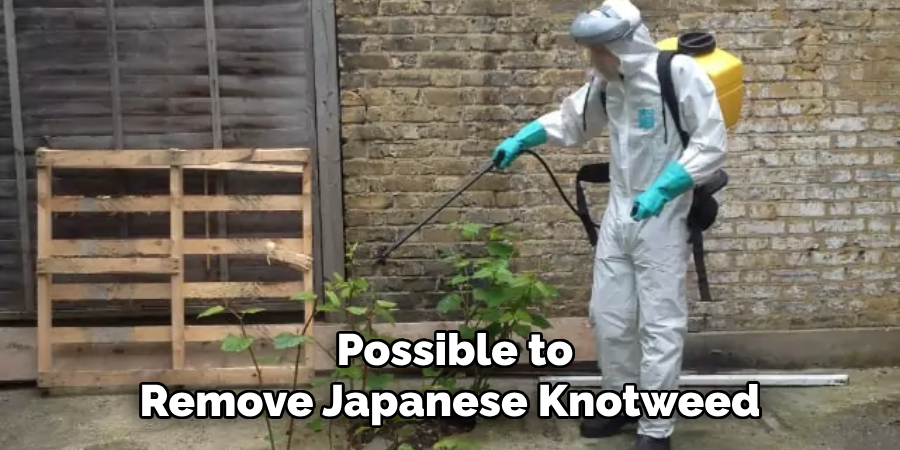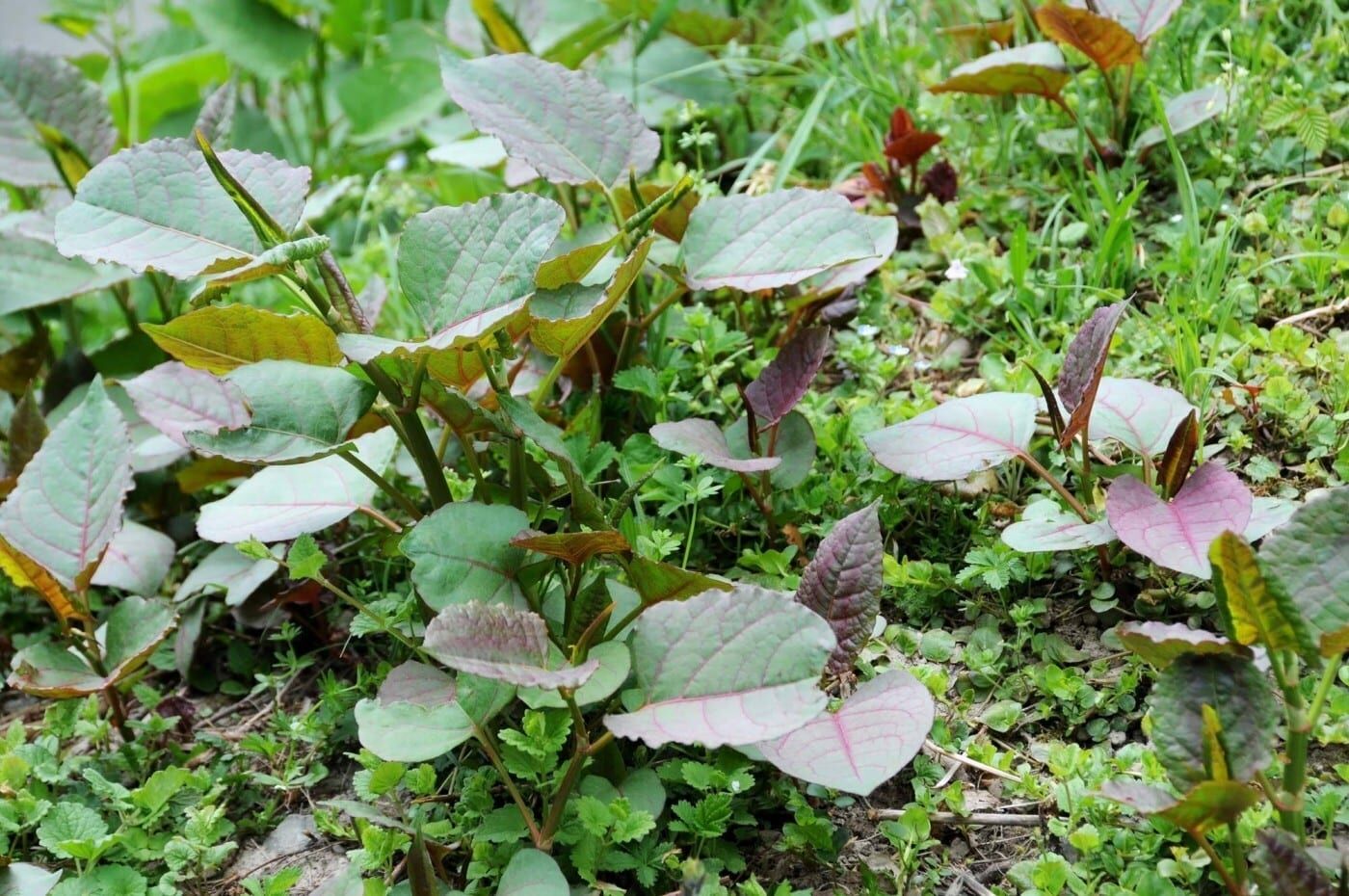To identify japanese knotweed, look for its bamboo-like stems, heart-shaped leaves, and white flowers. It grows rapidly and forms dense thickets that can damage buildings and infrastructure.
If left untreated, it can spread quickly and cause significant damage to the environment. Japanese knotweed is an invasive species that is native to eastern asia but has become a problem in many parts of the world. Its identification is crucial for effective management and eradication efforts.
By being vigilant and recognizing its distinct characteristics, you can take the necessary steps to control and remove japanese knotweed, preventing its further spread and minimizing its impact on ecosystems.

Credit: www.youtube.com
Where Does Japanese Knotweed Grow?
Japanese knotweed is an invasive plant that can be found in various locations worldwide. It tends to thrive in moist environments and can often be seen growing near rivers, roadsides, and in gardens. This plant has a number of distinctive characteristics that can help in its identification.
Japanese knotweed has hollow, bamboo-like stems with reddish-brown flecks and can grow up to 10 feet tall. Its leaves are heart-shaped and arranged alternately on the stem. Another feature to look out for is the plant’s flowers, which are small, creamy white in color, and grow in clusters.
Identifying japanese knotweed is important as it spreads rapidly and can cause damage to buildings and infrastructure. If you suspect its presence, it is best to consult a professional for proper removal and management.
How to Identify Japanese Knotweed: Step by Step Guide
Identifying Japanese Knotweed
Japanese knotweed can be identified by its visual appearance, which includes tall height and a dense growth pattern. The plant has distinct leaf characteristics, with broad, green leaves that are shaped like a heart. It also produces clusters of small white flowers and has seeds that are light brown in color.
To differentiate japanese knotweed from similar plants, look for its bamboo-like stems, which are hollow and have reddish-brown speckles. This plant can be easily distinguished from other knotweed species by its large, ovate leaves and its ability to grow up to 10 feet tall.
When comparing with other common plants, japanese knotweed stands out due to its aggressive growth nature and the difficulty in controlling its spread. Overall, being able to accurately identify japanese knotweed is crucial for effective management and prevention strategies.
Seasonal Changes And Growth Stages
Japanese knotweed can be identified by observing its seasonal changes and growth stages. In the spring, it shows early growth and distinguishing features. During the summer, it reaches a significant height and enters the flowering stage. In the fall, the foliage colors change, and it starts producing seeds.
By recognizing these characteristics, you can effectively identify japanese knotweed throughout the year. It’s important to note that starting sentences with commonly overused phrases should be avoided. Keeping sentences brief, using a maximum of 20 words each, ensures easy understanding and avoids repetition.
Additionally, using a variety of expressions to begin paragraphs maintains reader engagement. In this blog post, we will explore how to identify japanese knotweed in different seasons, providing valuable insights to help you in your efforts.
Identifying Japanese Knotweed By Its Impact On The Surroundings
Japanese knotweed can be identified by observing its impact on the surroundings. This invasive plant causes various damages, including soil erosion and displacement of native plant species. Structures and foundations are also at risk due to its aggressive growth. Visual indicators, such as its bamboo-like stems and heart-shaped leaves, are signs of japanese knotweed invasion.
Additionally, the plant’s rapid and extensive growth can outcompete nearby plants and vegetation. It is essential to be aware of these indications to recognize and address the presence of japanese knotweed effectively. Preventing its spread is crucial in protecting the environment and preventing further damage.
Stay vigilant and take action if you suspect its presence in your surroundings.
Tools And Resources For Proper Identification
Proper identification of japanese knotweed can be achieved through various tools and resources. Smartphone applications dedicated to plant identification can be helpful in this regard. Additionally, seeking professional assistance and contacting local agencies can provide accurate identification. Online databases and resources also serve as valuable references for identifying japanese knotweed.
By utilizing these tools and resources, individuals can effectively identify and address the presence of japanese knotweed in their surroundings.
Frequently Asked Questions Of How To Identify Japanese Knotweed
How Does Japanese Knotweed Spread?
Japanese knotweed spreads through its underground rhizomes and can easily spread to new areas if not properly managed. It can also spread through fragments of the plant, which can take root and grow into new plants if left untreated.
Can Japanese Knotweed Cause Damage To Property?
Yes, japanese knotweed can cause damage to property. Its strong and invasive roots can grow through foundations, walls, pipes, and other structures, leading to structural damage. It is important to identify and control japanese knotweed as early as possible to prevent costly damage.
How Can I Identify Japanese Knotweed?
Japanese knotweed has distinctive features that can help in its identification. Look for hollow, bamboo-like stems with purple speckles, heart or shovel-shaped leaves, and clusters of small white flowers in late summer. In autumn, the leaves turn yellow and fall off, while the stems remain standing.
Is Japanese Knotweed Harmful To The Environment?
Yes, japanese knotweed is considered harmful to the environment. It can outcompete native plant species, reducing biodiversity. Its dense growth can also create a monoculture, eliminating other plants. It can also alter soil chemistry and disrupt natural habitats. Proper management and control are essential to minimize its impact.
Can I Remove Japanese Knotweed Myself?

While it is possible to remove japanese knotweed yourself, it is advisable to seek professional help. Japanese knotweed is notoriously difficult to eradicate completely, and improper removal methods can lead to further spread. Professional treatment will ensure proper management and minimize the risk of regrowth.
Conclusion
To sum up, identifying japanese knotweed is crucial in order to prevent its spread and damage to your property. By familiarizing yourself with its distinct features, such as its bamboo-like stems, heart-shaped leaves, and white flower clusters, you can take action at the early stages.
Remember to use caution and wear protective gear when handling this invasive plant, as its sap can cause skin irritation. If you suspect japanese knotweed on your property, it is best to consult with a professional for proper identification and removal methods.
Taking proactive measures to control and eliminate japanese knotweed will not only help protect your property value but also contribute to the preservation of the environment. Stay vigilant and informed, and together, we can combat the spread of this aggressive plant species.

